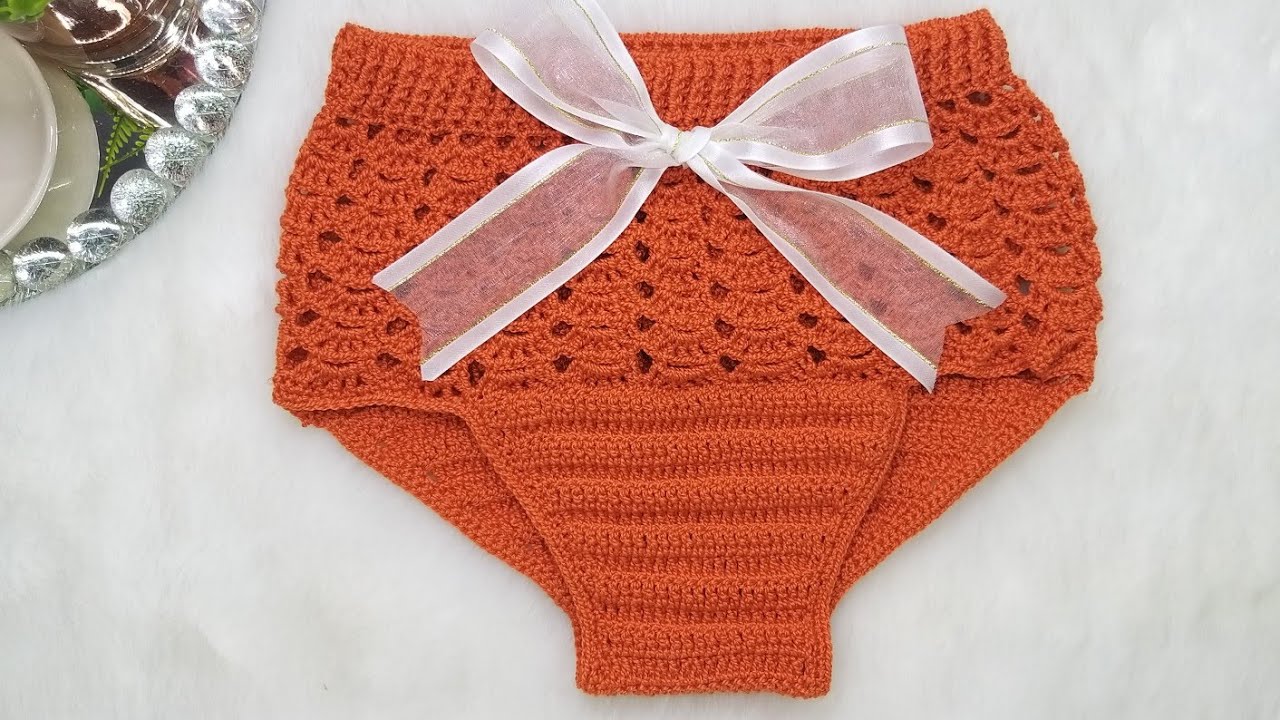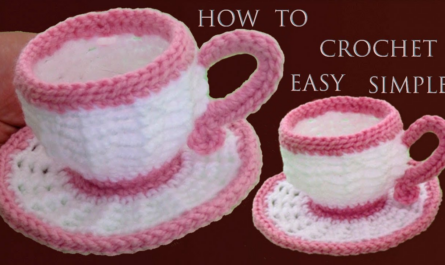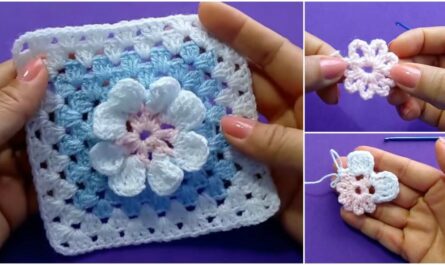In the world of handmade baby garments, where comfort meets charm, a truly unique piece emerges when traditional aesthetics blend with practical necessity. The Mandarin Diaper Cover is precisely that – a delightful fusion of classic East Asian design elements with the functionality of modern baby wear. Inspired by the distinctive features of traditional Chinese attire, this diaper cover transcends mere utility to become a stunning, photo-ready garment that’s as rich in cultural symbolism as it is adorable.
This detailed article will explore the enchanting concept of the Mandarin Diaper Cover, delving into its design philosophy, the essential yarn craft techniques (whether knitting or crocheting), and the immense joy of creating such a special and culturally inspired piece for a little one.
The Enchanting Concept of the Mandarin Diaper Cover
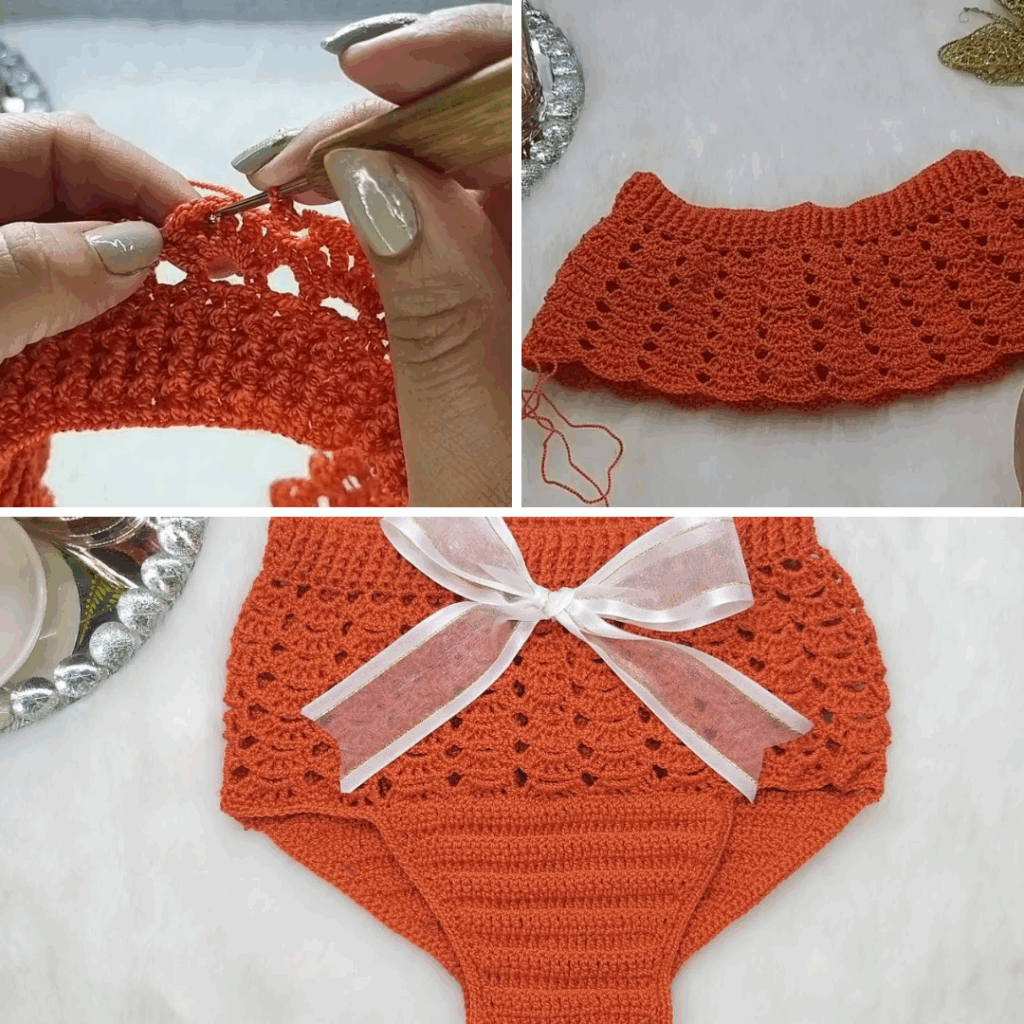
The “Mandarin” aspect of this diaper cover draws inspiration from several iconic features of traditional Chinese garments, particularly those featuring the distinctive Mandarin collar and ornate frog closures.
- Fusion of Cultures: It beautifully marries the clean lines and elegant details of East Asian clothing with the soft, practical needs of a baby’s diaper cover.
- Unique Aesthetic: Instantly recognizable elements set it apart from standard baby bloomers or shorts. Imagine rich colors, subtle textures, and exquisite closures.
- Celebration & Symbolism: Traditional Chinese culture is rich with symbolism. Incorporating colors like auspicious red (for luck and happiness), imperial yellow (for prosperity), or jade green (for purity), along with motifs like lucky clouds, cherry blossoms, or even miniature dragons/phoenixes, imbues the garment with deeper meaning.
- Handmade Charm: When crafted by hand, each Mandarin Diaper Cover becomes a unique work of art, a loving tribute to cultural heritage or simply a choice for distinctive baby style.
Key Design Elements Inspired by Mandarin Style
To truly capture the “Mandarin” essence in a diaper cover, consider these design hallmarks:
- The “Collar” Waistband: Instead of a full stand-up collar, the waistband of the diaper cover can mimic the look of a Mandarin collar. This might involve:
- A slightly higher, firmer waistband that stands up just a little.
- A side or front placket that creates the overlapping look typical of Chinese tops, fastened with frog closures.
- A double-layered waistband that gives it more structure.
- Frog Closures / Knots: This is arguably the most distinctive feature.
- Functional & Decorative: Instead of buttons, traditional frog closures (ornamental fasteners made from knotted cord) can be incorporated. These can be hand-crocheted or knitted into intricate knots (e.g., Chinese knot buttons made from i-cord), or purchased fabric frog closures can be securely sewn on.
- Placement: Typically seen at the “collar” waistband, especially if there’s a side or front placket.
- Color Palette:
- Traditional: Deep reds, rich golds, jade greens, royal blues, and imperial yellows are classic.
- Modern Twist: Muted versions of these colors, or elegant pastels with subtle accents of traditional colors.
- Contrast: A contrasting color for the waistband or trim can highlight the Mandarin details.
- Motifs & Embellishments:
- Embroidery: Small, delicate embroidered motifs like auspicious clouds, cherry blossoms, plum blossoms, peonies, or even stylized miniature dragons/phoenixes can be added to the front or back.
- Textured Stitches: Consider stitch patterns that evoke traditional patterns, such as scale-like stitches, or raised bobbles that resemble small flowers.
- Lustrous Yarns: Yarns with a slight sheen (like mercerized cotton, silk blends, or certain acrylics) can mimic the luxurious look of traditional silk garments.
- Silhouette: Most often, a Mandarin diaper cover will take the form of short bloomers or structured shorts, allowing for ease of movement and comfortable diaper accommodation.
Why Choose a Mandarin Diaper Cover (Benefits)
- Photo-Ready: The unique design makes for exceptionally memorable and adorable photographs.
- Special Occasions: Perfect for Lunar New Year celebrations, cultural events, themed photoshoots, or simply as a distinctive outfit for everyday wear.
- Unique Gift: It stands out from typical baby shower gifts, showcasing thoughtfulness and creativity.
- Skill Exploration: Offers an exciting opportunity to learn new yarn craft techniques, such as creating frog closures, managing structural elements, or adding embroidery.
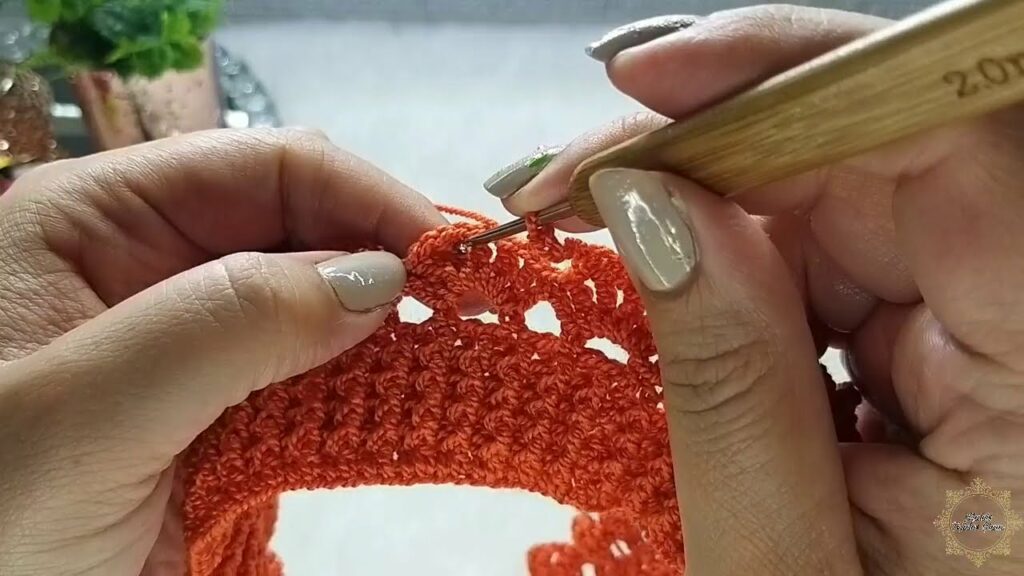
Materials: Your Palette for Cultural Crafting
- Yarn:
- Fiber: Supreme softness is non-negotiable for baby wear. Consider mercerized cotton (for sheen and breathability), silk blends (luxurious drape), or high-quality baby acrylics (for softness and washability).
- Weight: Sport (Category 2) or DK (Double Knitting, Category 3) are often ideal, providing good stitch definition for details while remaining comfortable.
- Colors: Choose from traditional Mandarin reds, golds, jades, or other symbolic colors. You might need a main color and a contrasting color for trims or frog closures.
- Tools (Crochet or Knitting):
- Crochet Hook / Knitting Needles: The size recommended by your pattern for your chosen yarn and desired fabric density.
- Stitch Markers: For marking rounds, increases, or special stitches.
- Tapestry Needle: Essential for weaving in ends and seaming. Also for embroidery.
- Scissors.
- Measuring Tape: Crucial for gauge and sizing.
- Notions (Crucial for Functionality & Style):
- Buttons/Snaps: For the functional diaper closure at the crotch. Choose small, flat, baby-safe options that are securely sewn.
- Fabric Frog Closures (Optional): If not creating them with yarn, purchase pre-made ones. Ensure they are soft and won’t irritate baby’s skin.
- Embroidery Floss (Optional): For adding decorative motifs.
- Elastic (Optional): For the waistband or leg openings if a stretchy, gathered finish is desired.
Essential Techniques for a Mandarin Diaper Cover
You’ll utilize a combination of basic and specialized yarn craft techniques:
- Foundation Chain (Crochet) / Casting On (Knitting): To start your project.
- Basic Stitches: Single Crochet (sc), Double Crochet (dc), Half Double Crochet (hdc) for crochet; Knit (K), Purl (P) for knitting.
- Working in the Round: Most diaper covers are worked in the round for the main body and legs.
- Increases & Decreases: For shaping the diaper cover to accommodate the baby’s bum and legs.
- Ribbing / Edging: For neat and comfortable finishes around the waist and leg openings.
- Creating Frog Closures (Advanced/Optional): This can involve crocheting or knitting long, thin tubes (like i-cords) and then hand-forming and securing them into intricate knots.
- Buttonholes / Snap Plackets: Designing and implementing secure closures for the diaper area.
- Embroidery: For adding traditional motifs using surface crochet/knitting or regular embroidery techniques.
- Blocking: Essential for shaping, evening out stitches, and achieving the correct dimensions and drape.
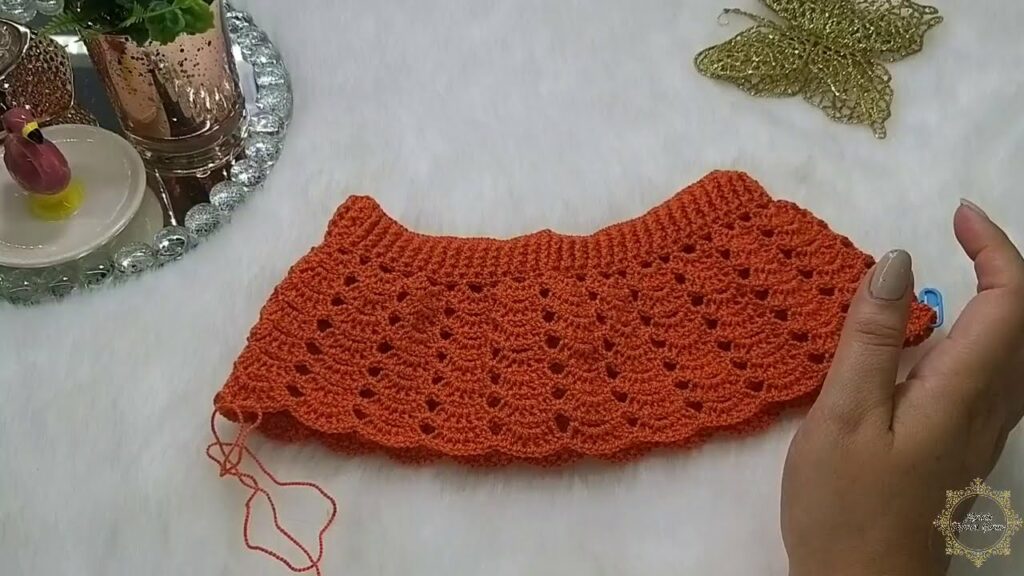
Construction Journey: Weaving Tradition into Fabric (Conceptual Guide)
A common approach for a diaper cover involves working from the waistband down:
- Preparation:
- Sizing: Refer to a pattern’s measurements for the specific age range (e.g., 0-3 months, 3-6 months). Ensure the design allows ample room for a diaper.
- Gauge Swatch: Crucial! Create a swatch in your main stitch pattern and block it. This ensures the finished cover will be the correct size and have the desired fabric density.
- Step 1: The Waistband & Mandarin Detail:
- Begin by creating the waistband. This is where you’ll incorporate the “Mandarin collar” effect (e.g., a standing band, a front or side placket for frog closures).
- If using frog closures, plan their placement now.
- Step 2: The Main Body of the Diaper Cover:
- From the waistband, work downwards in the round. You’ll typically increase stitches gradually to accommodate the baby’s hips and bottom.
- Ensure the fabric has enough give and is not too tight.
- Step 3: Shaping for Legs:
- Once the main body reaches the desired depth for the diaper area, you’ll divide the stitches for the two leg openings.
- Each leg is then worked individually in the round, shaping with decreases if a fitted leg opening is desired, or simply worked straight for bloomers.
- Step 4: The Crotch Closure:
- This is typically achieved by working flat sections from the inner leg openings, creating plackets that overlap at the center crotch.
- Integrate buttonholes (or plan snap placement) on one placket to secure it to the other.
- Step 5: Incorporating Mandarin Details:
- Frog Closures: If hand-making them, create them now and securely stitch them to the waistband placket.
- Embroidery: Add any desired embroidered motifs to the front or back of the diaper cover.
- Edgings: Add a final clean edge to leg openings and the waistband (if not already done), possibly with a contrasting color.
- Step 6: Finishing:
- Weave in All Ends: Meticulously secure every yarn tail. For baby items, this is paramount for safety and comfort – no loose ends or scratchy knots!
- Attach Buttons/Snaps: Securely sew on the functional crotch buttons or snaps.
- Blocking: Gently wet and reshape the finished diaper cover. Pin it to the correct dimensions, paying attention to the waistband and leg openings. Let it dry completely. Blocking opens up stitches, evens tension, and sets the final elegant shape.
Tips for Mandarin Perfection
- Prioritize Safety & Comfort: Always use soft, baby-safe yarns. Ensure all closures (buttons, snaps, frog knots) are extremely securely attached to prevent choking hazards. No scratchy seams or tags inside.
- Authenticity of Details: Research different types of Chinese frog knots or common symbolic motifs to inspire your design.
- Clean Finishes: The elegance of Mandarin style lies in its crispness. Strive for neat stitches, clean color changes, and invisible seams.
- Practice Closures: If you’re hand-making frog closures, practice a few times to get the technique down before attaching them to the garment.
- Embrace Color Symbolism: Choosing colors with traditional meanings can add an extra layer of thoughtfulness to your piece.
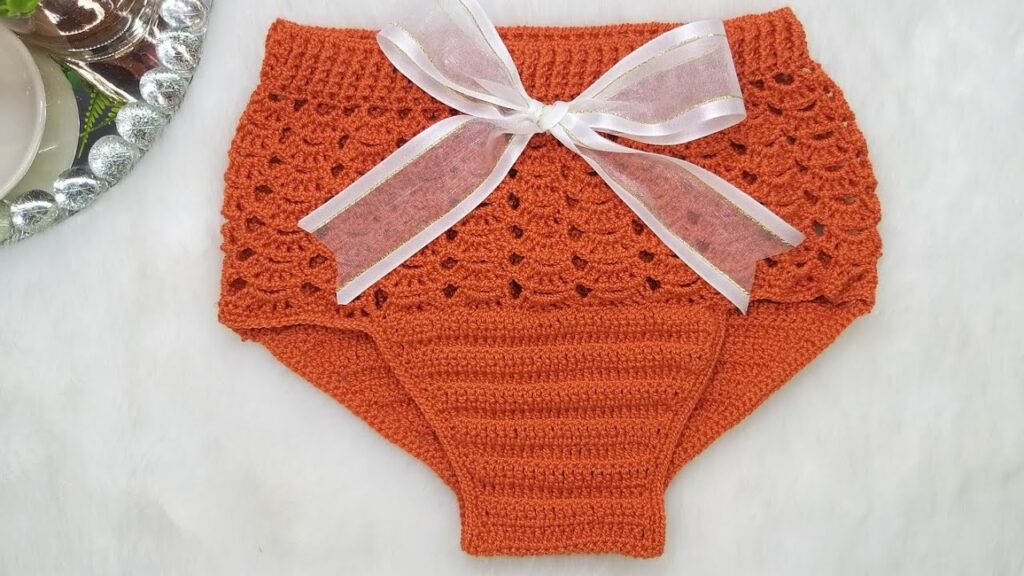
Caring for Your Cultural Treasure
- Follow Yarn Label Instructions: Always refer to your specific yarn’s care guidelines for washing and drying.
- Gentle Wash Recommended: For delicate handmade items, especially those with intricate details or frog closures, hand washing in cool water with a mild, baby-friendly detergent is often best. If your yarn is superwash, machine wash on a gentle cycle in a mesh laundry bag.
- Reshape and Lay Flat to Dry: Never wring or twist. Gently squeeze out excess water, reshape the diaper cover to its original dimensions, and lay it flat on a clean towel or a mesh drying rack to air dry completely.
The Mandarin Diaper Cover is a delightful project that transcends the ordinary. It’s a lovingly crafted garment that combines practical function with rich cultural aesthetics, creating a unique and memorable piece for any baby’s wardrobe. Sources
Video Tutorial ;
